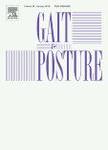版权所有:内蒙古大学图书馆 技术提供:维普资讯• 智图
内蒙古自治区呼和浩特市赛罕区大学西街235号 邮编: 010021

作者机构:Univ Florida Coll Engn Gainesville FL 32611 USA Harvard Med Sch Dept Phys Med & Rehabil Boston MA 02115 USA Spaulding Rehabil Hosp Charlestown MA 02129 USA Univ Vermont Dept Rehabil & Movement Sci Burlington VT 05405 USA
出 版 物:《GAIT & POSTURE》 (步法与姿势)
年 卷 期:2020年第75卷
页 面:121-128页
核心收录:
学科分类:0403[教育学-体育学] 1002[医学-临床医学] 1001[医学-基础医学(可授医学、理学学位)] 10[医学] 1009[医学-特种医学]
主 题:Spinal cord injury Gait kinematics Spatiotemporal asymmetry Walking Interlimb coordination
摘 要:Background: Returning to community walking remains a major challenge for persons with incomplete spinal cord injury (iSCI) due, in part, to impaired interlimb coordination. Here, we examined spatial and temporal features of interlimb coordination during walking and their associations to gait deficits in persons with chronic iSCI. Research Question: Do deficits in spatial and temporal interlimb coordination correspond differentially to clinical indicators of walking performance in persons with iSCI? Methods: Sixteen persons with chronic iSCI and eleven able-bodied individuals participated in this study. Participants walked at self-selected gait speeds along an instrumented walkway that recorded left and right step lengths and times. We quantified interlimb coordination in terms of normalized differences between left and right step lengths (spatial asymmetry index) and step times (temporal asymmetry index), as well as, gap and phase coordination indices. We then assessed the extent to which these indices independently associated with clinical measures of walking performance. Results: Participants with iSCI demonstrated greater spatial and temporal asymmetry, as well as, reduced gap and phase interlimb coordination as compared to age-matched controls (p 0.05) or between gap and phase coordination indices (p 0.05). Spatial and temporal asymmetry indices weakly correlated with SCI-FAI composite scores (r(2) = 0.26;p = 0.04). However, only spatial asymmetry indices strongly correlated with slower walking speed (r(2) = 0.51;p 0.002). We also found participants who used a hand-held assistive device (walker) demonstrated great spatial asymmetry as compared to those who did not (p 0.03). Significance: Differential impairments in spatial and temporal interlimb coordination correspond to overground walking deficits in persons with chronic iSCI. Spatial asymmetry associated with